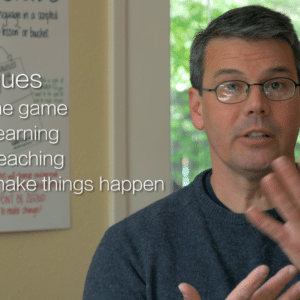
This baby, like most, finished developing "just in time" to be born. A great application of the technique. Image © Christopher Chan / Creative Commons.
You are fluency hunting a skill comprised of uncountable bite-sized pieces, with the option of using and sharing hundreds of accelerating techniques. Yet this doesn’t overwhelm you, because you always bring up new information just in time.
Information and ability is acquired most deeply and rapidly at the moment of its greatest relevance.
If you were a typical American teenager, you’ll remember one of the great unanswerable questions of your high-school algebra class: “when will we ever use this?”.
Imagine this question applied unconsciously to everything you’ve ever learned. For every skill you’ve wanted to learn, for every attempt to speak a foreign language, that same part of your brain that bedeviled your high-school algebra teacher also bedevils you. It’s just part of being human. Your body and mind only want to learn deeply and rapidly when it becomes very important – when you can directly see the relevance. When you use your learning right away, in context, and see results.
Some call this experience “the teachable moment”.
This is the understanding behind the technique “Just in Time”. Every game of WAYK looks different, because every context is different, and thus the just in time environment is different. That which is vital in order to proceed in one context, may be irrelevant in another. Some techniques just don’t ever come up for some folks in some places.
Just in time means you have waited until the moment where either you can’t proceed without the needed information (or fluency), or it is directly relevant to play, and that is the moment at which you bring it up. This is not something you can predict, but it is something you can be ready for, knowing the general flow and pattern of how learning works.
For example, WAYK offers a fairly universal roadmap for getting to adult fluency, with an ordered series of conversations, grammar and vocabulary. Yet this is just a roadmap – it’s not the plan that is important, but the planning itself, always keeping in mind a general sense of how things will occur most often.
Introducing the technique in language acquisition
Short: “Technique: Just in Time. There’s a lot of techniques, and a lot of language to learn – but no worries, we’ll avoid overwhelming you by always bringing up each bite-sized piece just in time for when you need it.”
Applying the technique to language acquisition
Avoid lengthy introductions, or long lists of techniques that you think the players will need. Cue off of how you yourself learned WAYK – one bite-sized piece at a time, and each just in time for when you needed it. The techniques are great, sure, and fascinating to learn about, but the only way the players will understand them is to use them – just in time. And “learning about” WAYK isn’t the goal: fluency in WAYK game play (and the target language) is.
But what about…?
To this day, many new players want to read about WAYK; they want lists of techniques and background information. If they are already building their fluency in WAYK game-play, this can be an asset, enriching their understanding of the mentoring language. However, it’s easy to prioritize “knowledge about” over ability to do. There is a constant tension between the two – and neither are bad or good. Both have their roles.
- tq Fluency reminds us that our understanding of something is measured not by what we know, but what we can fluently do. It also encourages us to take our knowledge and turn it into ability.
- tq Killing Faeries reminds us that explanations can easily make us full, and take up the space in our brains that fluency is hoping to occupy.
- tq No-grief Debrief provides a space for explanations and discussions after-wards, once we have acquired experience enough to have something useful to say.




